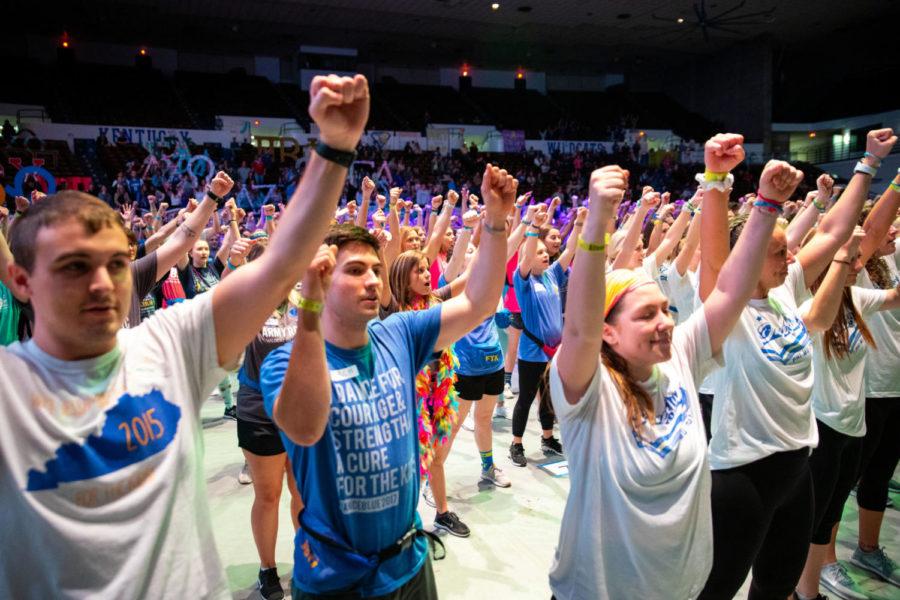UK DanceBlue finishes year of fundraising with $1.88 million
University of Kentucky students participate in a DanceBlue line dance on Saturday, March 2, 2019 at Memorial Coliseum in Lexington, Kentucky. DanceBlue is a philanthropic event where students dance for 24 hours straight to raise awareness and money for pediatric cancer care. Photo by Jordan Prather | Staff
March 3, 2019
The 14th annual DanceBlue marathon ended Sunday night, raising $1,880, 954.88.
That total comes from both the dance marathon and fundraising events from the past year, since the finish of 2018’s dance marathon, said Sara Edgett, marathon coordinator.
Edgett, a senior, has participated in DanceBlue for the past four years. As marathon coordinator, she was responsible for the minute-to-minute activities for the dance marathon.
The money will all go to the Kentucky Children’s Hospital Hematology/Oncology Clinic. Since its beginning in 2006, DanceBlue has now raised $15,301,853.23 for the Kentucky Children’s Hospital Hematology/Oncology Clinic.
That money goes to research, clinical care and assisting families with the day-to-day of the cancer experience, like gas and parking fees. $1,880,954.88 is a new record, beating 2018’s total by over $70,000. Last year’s marathon raised $1,804,068.77.
“There really aren’t words to express the effect you’ve had,” said Jennifer Mynear to the crowd during her speech in the final hour of the marathon.
Mynear helped start DanceBlue in memory of her son Jarrett.
Dr. Tom Badgett, a pediatric oncologist in the clinic since 2012, said that because of DanceBlue the clinic has “resources that aren’t necessarily available at larger institutions, in the form of social workers, our educational intervention specialist.”
“We have neurocognitive testing for every patient and the fantastic facilities we get to treat our patients in and the interactions of the students with the patients is just absolutely amazing,” Badgett said.
The bond between patients and students is formed from hospital visits, when DanceBlue committee members keep children company during the long, boring hours of treatment, and the dancing teams that sponsor individual children.
“To see the kids here during DanceBlue just having fun and being kids, that’s just absolutely amazing, and they have their older friends out there supporting them. It’s great to see those interactions,” Badgett said.
Edgett echoed that sentiment, saying that her favorite part of the event is “watching the clinic kids get up and just show off their fun spirits and personalities and just be kids in front of the people who love them.”
Beyond the money, DanceBlue creates a sense of community, many in attendance said.
“The money is nice, don’t get me wrong, but the real benefit is seeing students engaged,” Badgett said. “What’s truly inspiring is how much the students give of themselves.”
Edgett said that every year it’s refreshing to see new students, new dancers and new families get involved with DanceBlue.
“It does provide hope,” said Edgett, “that this fight will never stop until it’s over.”






























































































































































